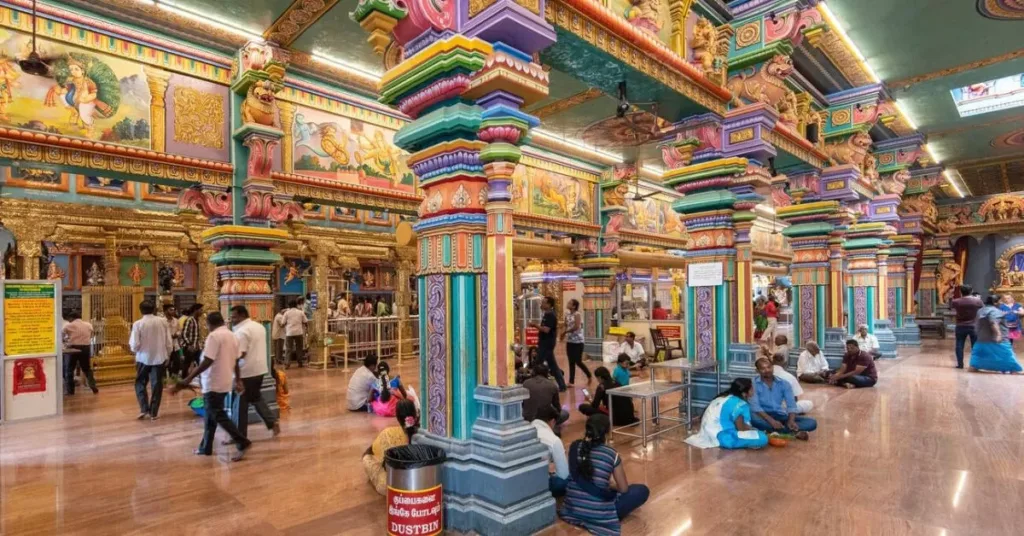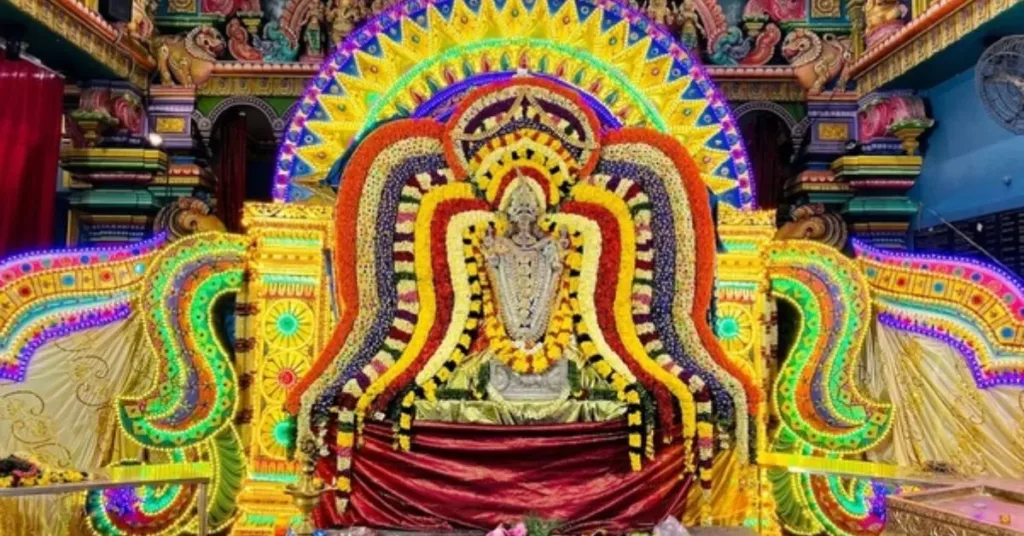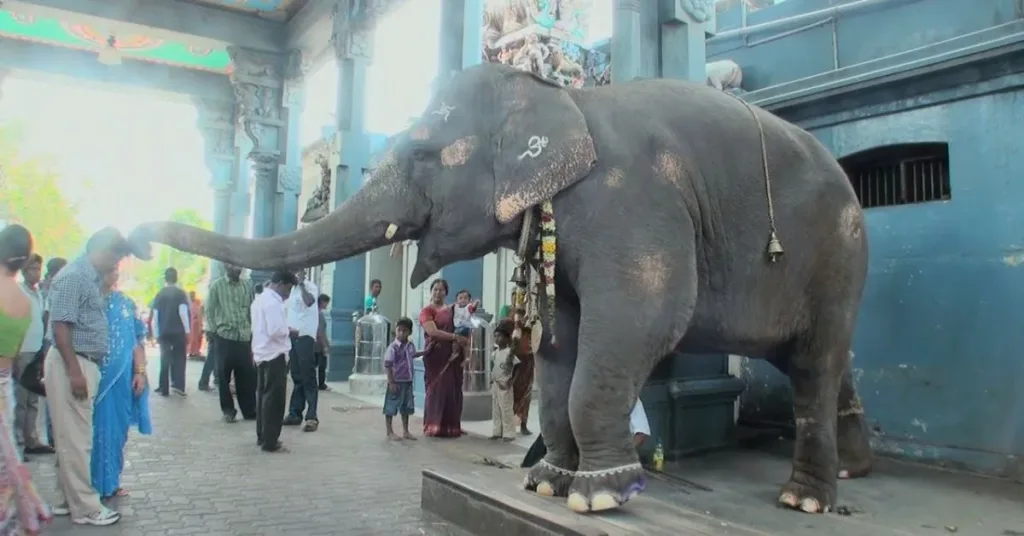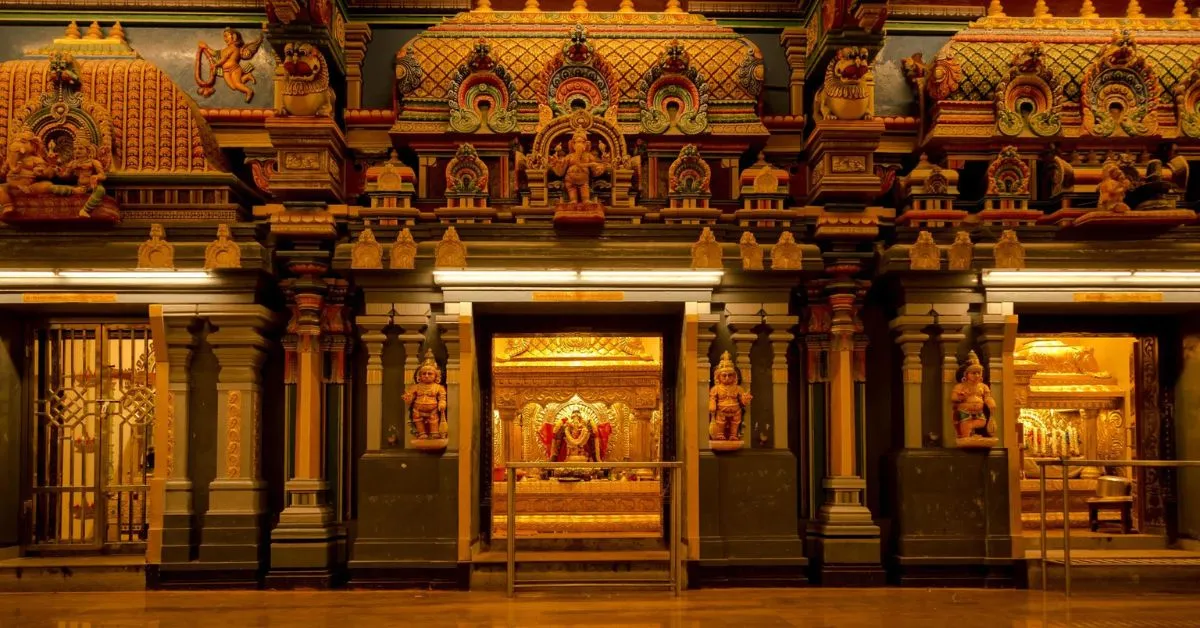Nestled in the heart of Puducherry, the Manakula Vinayagar Temple stands as a revered beacon of spirituality and cultural heritage. Dedicated to Lord Ganesha, the elephant-headed deity known as the remover of obstacles, this ancient temple attracts devotees and tourists alike with its profound history and architectural splendor.
As one of Puducherry’s most significant religious sites, the Manakula Vinayagar Temple offers a serene escape into tradition and devotion. The temple’s rich history, captivating rituals, and vibrant festivals create an immersive experience that reflects the deep-rooted cultural fabric of this coastal city. Whether you’re seeking spiritual solace, exploring local traditions, or simply appreciating the artistry of South Indian temple architecture, a visit to Manakula Vinayagar Temple promises a memorable journey into the essence of Puducherry’s sacred landscape.
How to reach:
By Air:
- Nearest Airport: Puducherry Airport
- Distance: Approximately 8 kilometers
- Transportation: Taxi or auto-rickshaw
- Travel Time: 20-30 minutes
By Train:
- Railway Station: Puducherry Railway Station
- Distance: Approximately 3 kilometers
- Transportation: Taxi or auto-rickshaw
- Travel Time: 10-15 minutes
By Bus:
- Bus Stand: Puducherry Bus Stand
- Distance: Approximately 1.5 kilometers
- Transportation: Walk or auto-rickshaw
By Car:
- Accessibility: Well-maintained roads
- Parking: Available nearby (may be crowded)
Local Transportation:
- Options: Auto-rickshaws and taxis
- Convenience: Easily accessible from various parts of the city
Best time to visit:
1. Weather Considerations:
- Winter (November to February): Ideal for sightseeing and temple rituals.
- Summer (March to June): Hot and humid; early morning or late evening visits recommended.
- Monsoon (July to September): Rainy weather; unique experience but potential travel disruptions.
2. Festivals and Special Events:
- Ganesh Chaturthi: Celebrated in August or September, featuring elaborate decorations, special prayers, and a festive atmosphere.
- Pongal: Celebrated in January, offering traditional rituals and community celebrations.
Attractions:
Intricate Architecture:

Manakula Vinayagar Temple is renowned for its stunning South Indian architectural style, a testament to the artistic prowess of traditional craftsmen. The temple’s façade is dominated by elaborately carved gopurams (gateway towers) that rise majestically above the entrance, adorned with a kaleidoscope of vibrant colors and intricate sculptures.
These towering gateways are adorned with depictions of various deities, celestial beings, and mythological stories, creating a visual narrative that enchants visitors. The temple’s inner sanctum is equally impressive, with intricately detailed columns and walls showcasing beautiful carvings and frescoes that reflect the rich cultural heritage of the region.
Sacred Idol of Lord Ganesha:
At the heart of Manakula Vinayagar Temple lies the revered idol of Lord Ganesha, a symbol of wisdom and the remover of obstacles. This sacred idol is crafted from a unique material known as “Manakula” (a type of clay), which is believed to hold spiritual significance. The idol is meticulously adorned with ornate jewelry and garlands, enhancing its divine presence.
Devotees flock to the temple to offer their prayers and seek blessings from this majestic deity. The sight of the idol, combined with the soothing sounds of devotional chants and the aroma of incense, creates a deeply spiritual atmosphere that resonates with visitors and enhances their devotional experience.

Festive Celebrations:
Manakula Vinayagar Temple comes alive with vibrant celebrations during major festivals, particularly Ganesh Chaturthi and Pongal. During Ganesh Chaturthi, the temple is adorned with elaborate decorations, including lights, flowers, and colorful rangoli patterns, creating a festive and lively atmosphere. Special rituals and processions take place, drawing large crowds of devotees and visitors who come to participate in the celebrations.
Similarly, the Pongal festival brings traditional festivities to the temple, with special prayers, cultural performances, and community gatherings. These festivals offer a unique opportunity to witness and engage with local customs and traditions, adding a dynamic and celebratory dimension to the temple experience.

Local Experiences:
- Join festivals: Immerse yourself in vibrant celebrations during major festivals.
- Explore local markets: Browse nearby markets for traditional souvenirs and handicrafts.
- Sample local cuisine: Enjoy delicious South Indian delicacies.
- Attend cultural events: Experience traditional music and dance performances.
- Visit nearby temples and historical sites: Gain a broader understanding of the city’s religious and cultural landscape.
- Engage with local artisans: Learn about their techniques and the cultural significance of their work.
- Take a heritage walk: Explore the history and architecture of the temple and its surroundings.
- Participate in community activities: Contribute to local initiatives and foster connections.
- Relax in temple gardens: Enjoy a tranquil space for contemplation away from the city’s hustle.
- Experience local festivals: Enjoy traditional games, food stalls, and performances.
- Learn about local customs: Gain a deeper appreciation for the spiritual and cultural life of Puducherry.
Travel tips:
- Dress code: Dress conservatively, covering your shoulders and knees.
- Footwear: Remove your footwear before entering the temple premises.
- Timing: Visit early in the morning or late in the evening to avoid crowds.
- Respect rituals: Observe and follow the temple’s customs respectfully.
- Cash: Carry cash for offerings, donations, and purchases.
- Hydration: Stay hydrated, especially during warmer months.
- Local transportation: Use auto-rickshaws or taxis for convenient travel.
- Avoid peak hours: Visit on weekdays to avoid large crowds.
- Photography: Check the temple’s policy on photography.
- Personal belongings: Keep your belongings secure.
- Planning: Research temple timings, events, and entry fees beforehand.
- Engage with locals: Ask for information and guidance if needed.
Conclusion
Manakula Vinayagar Temple, a sacred haven in Puducherry, offers a profound and enriching experience. Explore its intricate architecture, vibrant rituals, and serene atmosphere on Xplro.com. From the majestic idol of Lord Ganesha to lively festival celebrations, every aspect provides a unique insight into the region’s religious traditions and cultural heritage. As you stroll through the peaceful surroundings and engage with the local community, you’ll feel deeply connected to the rich tapestry of Puducherry’s spiritual and cultural landscape. Whether seeking spiritual solace, a glimpse into local customs, or simply a moment of tranquility, Manakula Vinayagar Temple stands as a beacon of devotion and heritage, a must-visit for travelers and devotees alike.
FAQs
1. What is Manakula Vinayagar Temple famous for?
- Manakula Vinayagar Temple is celebrated for its dedication to Lord Ganesha, revered as the deity who removes obstacles. It is known for its intricate South Indian architectural style and the distinctive idol of Lord Ganesha made from a unique substance called “Manakula.”
2. What are the temple’s operating hours?
- The temple generally opens in the early morning and closes in the late evening. Typical hours are from around 5:30 AM to 12:00 PM for the morning session and from 4:00 PM to 9:00 PM in the evening. It’s advisable to verify the current timings before planning your visit.
3. Is there a fee to enter the Manakula Vinayagar Temple?
- There is no entry fee required for visiting Manakula Vinayagar Temple. While entrance is free, visitors may choose to make voluntary donations, which can be done at specific locations within the temple premises.
4. What should I wear when visiting the Manakula Vinayagar Temple?
- Visitors are expected to dress modestly. It is recommended to wear clothes that cover the shoulders and knees. Traditional attire such as sarees or dhotis is preferred, but modest casual clothing is also acceptable.
5. Are photographs allowed inside the Manakula Vinayagar Temple?
- Photography rules can vary. Typically, taking pictures inside the temple may be restricted to maintain the sanctity of religious practices. It’s best to check for any posted guidelines or ask for permission before photographing.
6. Are there facilities for storing personal items?
- The temple provides areas for leaving footwear and personal belongings. There may also be a cloakroom or a designated space for secure storage. However, it is best to bring only essential items and keep valuables safe.
7. How do I get to the temple from Puducherry Railway Station?
- Manakula Vinayagar Temple is about 3 kilometers from Puducherry Railway Station. You can easily reach the temple by taking a taxi or an auto-rickshaw, which typically takes around 10-15 minutes.
8. What are some key festivals celebrated at the temple?
- The temple hosts several significant festivals, including Ganesh Chaturthi, which honors Lord Ganesha, and Pongal, a harvest celebration. These festivals feature special prayers, decorations, and vibrant processions.
9. Can I participate in any specific rituals or pujas?
- Yes, visitors can take part in various rituals and pujas held throughout the day. The morning aarti, where light is offered to the deity, is particularly popular. Observing or participating in these ceremonies offers a deeper insight into the temple’s devotional practices.
10. Are there accommodation options near the temple?
- Yes, there are various lodging options close to Manakula Vinayagar Temple, ranging from budget-friendly hotels to more upscale accommodations. It is advisable to make reservations in advance, especially during peak travel seasons or festival times.
11. Where can I find local dining options nearby?
- Numerous dining establishments are situated near the temple, offering traditional South Indian dishes such as dosa, idli, and vada. Local eateries and street food vendors provide a range of regional culinary delights.
12. What local experiences can I enjoy around the temple?
- In the vicinity of the temple, you can explore local markets and shops selling traditional crafts and souvenirs. Additionally, participating in local festivals, sampling regional cuisine, and visiting nearby cultural and historical sites can enrich your experience of Puducherry.




